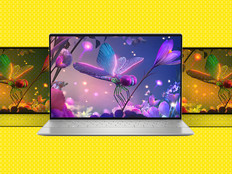Retailers have relied on touch-screen technology for years. Today, these solutions are making their way into fields such as healthcare and manufacturing — as well as corporate environments — as the technology improves and more business leaders see the potential benefits of adopting touch-enabled displays across their organizations.
“The primary use cases we are observing are in manufacturing, logistics and healthcare,” says Nishant Udupa, practice director at Everest Group.
He notes that modern touch screens feature advanced connectivity, edge processing and security capabilities, as well as multitouch functionality, making the devices flexible and powerful enough to support a broad range of use cases. In particular, he says, the transition from pressure-activated screens to more responsive projected capacitive touch screens has boosted adoption and improved durability.
Click the banner below to learn how touch screens deliver cost savings, durability and simplicity.
Why Touch Screens Are Being Adopted Across Industries
Numerous factors are driving increased adoption of touch screens and other digital displays in industrial settings, says Paul Miller, vice president and principal analyst for smart manufacturing at Forrester. He credits the increase to greater adoption of interoperable standards for moving data between solutions from different vendors, closer cooperation between IT and operational technology teams and the increasing availability of rugged, reliable, cost-effective displays.
“Digital screens can have a transformative effect in industrial settings because they can adapt to the context and the user,” Miller says. “Instead of needing physical buttons or dials for every function, the screen can be programmed to display only the information that is relevant to the task at hand. Touch adds an additional mode of interaction.”
READ MORE: Why touchscreens bring powerful capabilities to Industry 4.0.
In particular, Miller says, industrial organizations are using touch screens to track high-level metrics and key performance indicators, monitor machine-level performance and replace button- and switch-based control systems.
Udupa says he sees warehouse and logistics firms using touch screens for inventory management and tracking, order picking and packing, and interactive maps for warehouse navigation. In healthcare, he says, organizations use the devices to check in patients, update medical information and streamline data entry for clinicians.
“Another segment of use cases can be found in corporate offices,” Udupa adds. “Touch screens are used to control HVAC and elevator systems, improve visitor management in reception areas and improve collaboration within conference rooms.”
RELATED: Find out more about how CDW and Elo Touchscreens can support your business.
To Optimize Touch Screen Displays, Integrate With IoT Protocols
Udupa says IT and business leaders should look for a number of “must have” capabilities when selecting touch-enabled digital displays. “These include durability for harsh environments, accuracy and sensitivity for registering inputs, high resolution and clear visibility,” he says. “Other critical capabilities are security features, scalability for handling additional connected devices, integration with Internet of Things protocols and support for various connectivity options.” Additionally, Udupa says, multitouch capability and gesture support, along with energy efficiency, are useful features that are important to many organizations.
In industrial settings, Miller says, the most important characteristics for organizations to consider include ruggedness, reliability, affordability and consistency. He suggests that organizations pay particular attention to making the interfaces presented by touch screens simple and user-friendly. Ease of use is especially valuable in industrial settings where mistakes can threaten the health and safety of personnel. “Wherever possible, the screens should behave in a predictable and consistent fashion, reducing cognitive load, cost and the risk of making mistakes,” Miller says.
UP NEXT: Checkout how to boost your digital transformation in the manufacturing sector.
Still, Miller says, digital displays and touch screens can help workers stay better informed and be more effective at their jobs. “They can see information that might previously have required a trip to the control room,” he says. “And interfaces that adapt to a use case — and possibly even a user’s level of expertise — make it easier to quickly, reliably and repeatably complete tasks.”
Ultimately, the effective use of touch-screen digital displays can deliver valuable capabilities to a variety of industries, and as the technology continues to evolve, these use cases will only grow.
Brought to you by:














